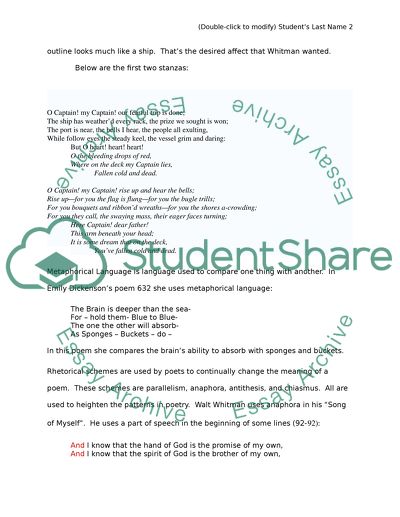Cite this document
(“Prosody of Dickinson and Whitman Essay Example | Topics and Well Written Essays - 1500 words”, n.d.)
Prosody of Dickinson and Whitman Essay Example | Topics and Well Written Essays - 1500 words. Retrieved from https://studentshare.org/literature/1504553-prosody-of-dickinson-and-whitman
Prosody of Dickinson and Whitman Essay Example | Topics and Well Written Essays - 1500 words. Retrieved from https://studentshare.org/literature/1504553-prosody-of-dickinson-and-whitman
(Prosody of Dickinson and Whitman Essay Example | Topics and Well Written Essays - 1500 Words)
Prosody of Dickinson and Whitman Essay Example | Topics and Well Written Essays - 1500 Words. https://studentshare.org/literature/1504553-prosody-of-dickinson-and-whitman.
Prosody of Dickinson and Whitman Essay Example | Topics and Well Written Essays - 1500 Words. https://studentshare.org/literature/1504553-prosody-of-dickinson-and-whitman.
“Prosody of Dickinson and Whitman Essay Example | Topics and Well Written Essays - 1500 Words”, n.d. https://studentshare.org/literature/1504553-prosody-of-dickinson-and-whitman.


